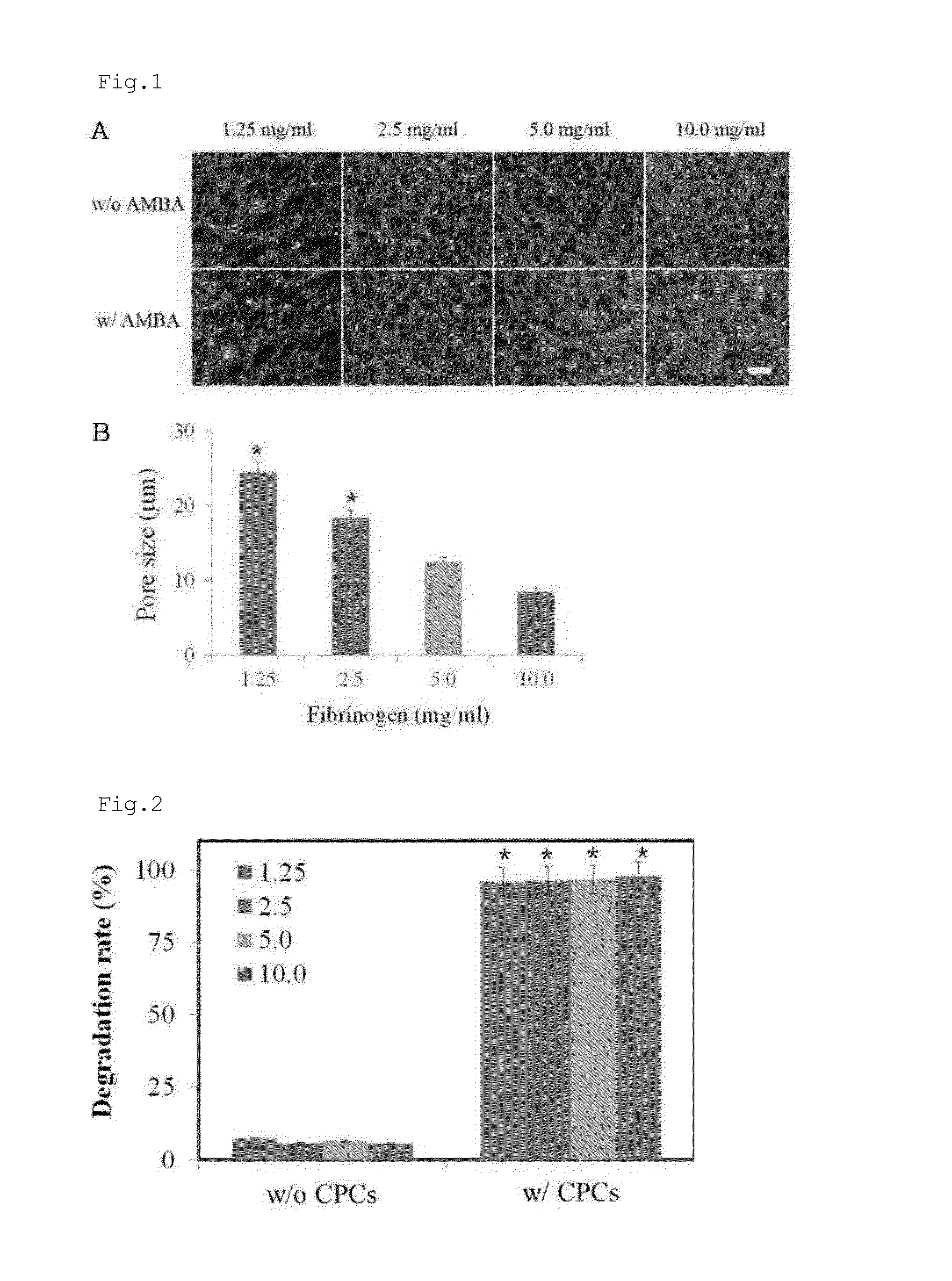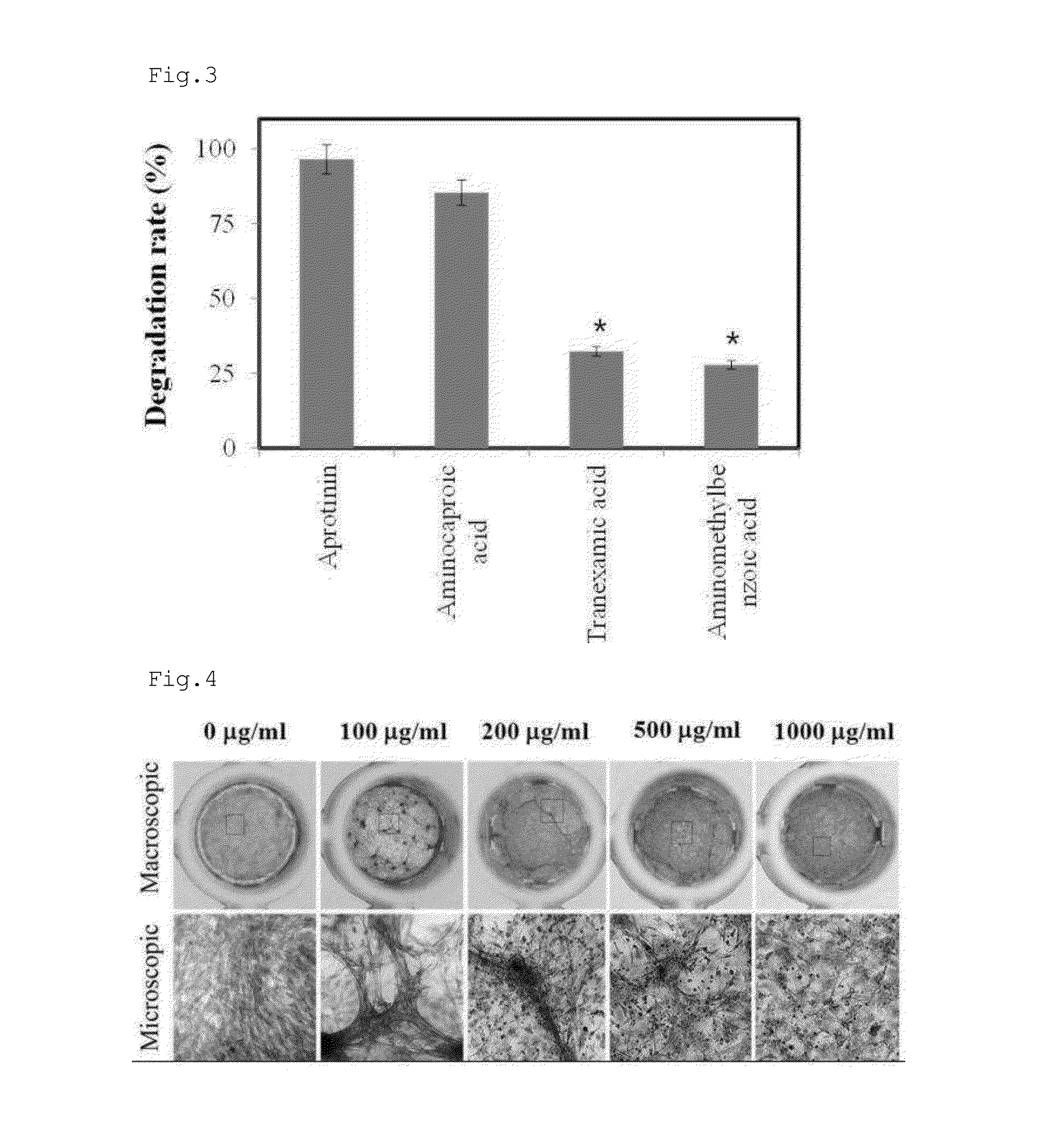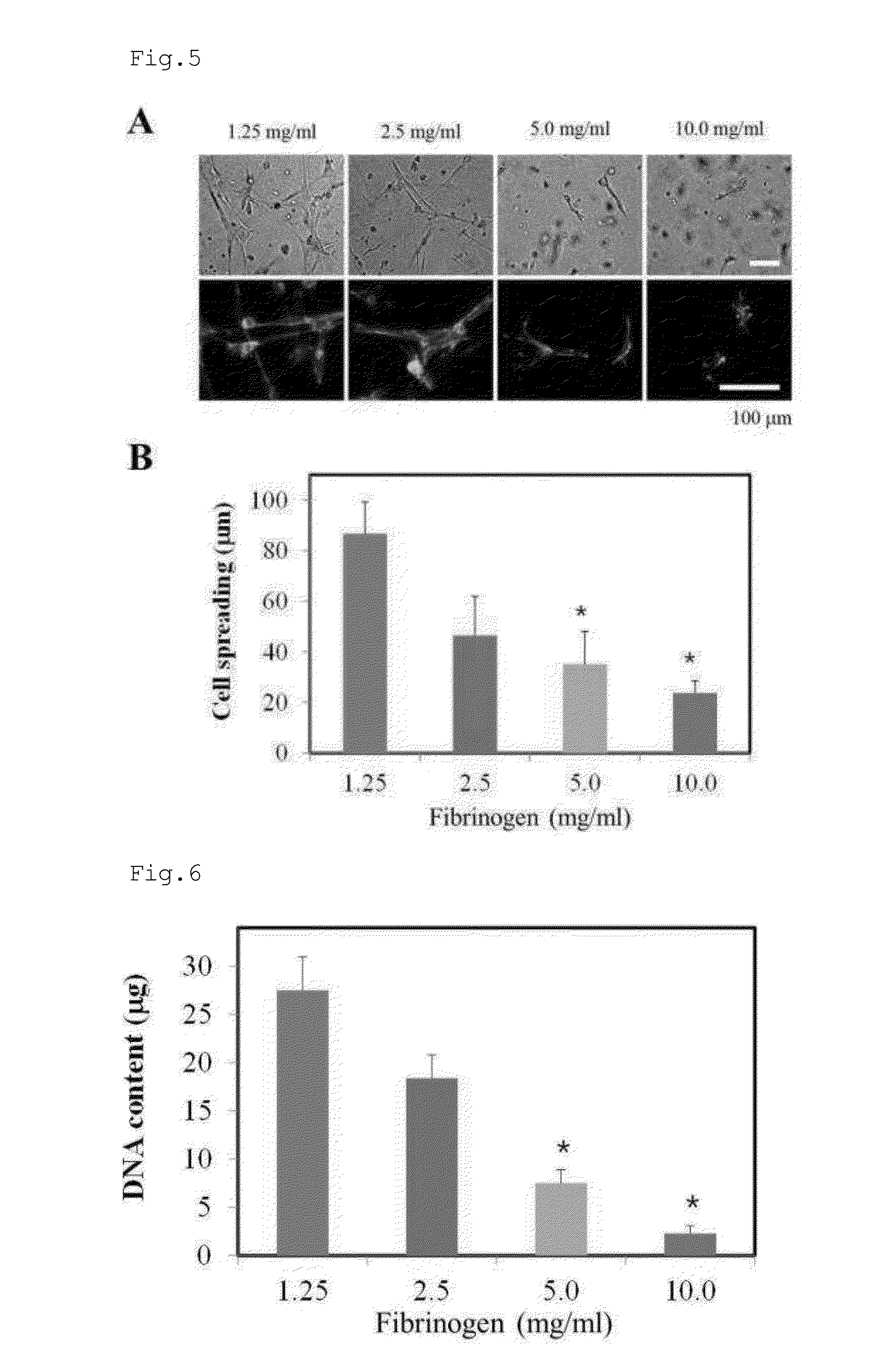Method for culturing cardiac progenitor cells and use of cardiac progenitor cells
a technology of progenitor cells and culturing method, which is applied in the field of culturing cardiac progenitor cells and using cardiac progenitor cells, can solve the problems of difficult technical problems that must be solved, the heart is regenerated, and the heart function decreases, and achieves high yield, high industrial applicability, and great efficiency.
- Summary
- Abstract
- Description
- Claims
- Application Information
AI Technical Summary
Benefits of technology
Problems solved by technology
Method used
Image
Examples
example 1
Construction of Hydrogel Microarchitecture with Various Concentrations of Fibrinogen
[0166]In order to examine the effect of fibrinogen on the microarchitecture thereof, fibrin hydrogels were constructed with various concentrations of fibrinogens. In this regard, fibrin was prepared from four concentrations of fibrinogen. Human plasma-derived fibrinogen (GreenCross, Seoul, Korea) was dissolved in DMEM containing 10 mM CaCl2 to give 2.5, 5.0, 10.0, and 20.0 mg / ml fibrinogen solutions. Alexa Fluor 488-conjugated fibrinogen (1:50 w / w) (Invitrogen, Carlsbad, Calif.) was added to the fibrinogen solutions. Separately, thrombin (Sigma, St. Louis, Mich.) was dissolved in DMEM to form a thrombin solution with a final concentration of 1 unit / ml. Each of the four fibrinogen solution was mixed at a ratio of 1:1 (v / v) with the thrombin solution, and 10 μl of each of the resulting mixtures was placed on a glass slide and incubated at 37° C. for 2 hrs for a cross-linking reaction. Finally, four fib...
example 2
Fibrinolysis of Cardiac Progenitor Cells
[0168]Four hydrogels with different fibrinogen concentrations were prepared in the same manner as in Example 1. Alexa Fluor 488-conjugated fibrinogen (1:50 w / w) (Invitrogen, Carlsbad, Calif.) was added to each of the four fibrinogen solutions. The cardiac progenitor cells were mixed at a density of 2×105 cells per 100 μl of each of the four fibrinogen solutions with 100 μl of the thrombin solution, followed by a cross-linking reaction for 2 hrs. Following the formation of hydrogel, 300 μl of a cell culture was added to the hydrogel, and incubated for 1 day. A hydrogel void of cardiac progenitor cells was prepared for use as a control. Degradation rates of the fibrin contained in hydrogels were determined by measuring the Alexa Fluor 488-conjugate fibrinogen released to the culture medium by means of a fluorometer.
[0169]As can be seen in FIG. 2, the hydrogel embedded with cardiac progenitor cells (w / CPCs) started to degrade from 2 hrs after inc...
example 3
Inhibition of Antifibrinolytic Agents against Cardiac Progenitor Cell-Induced Fibrinolysis
[0170]Antifibrinolytic agents were purchased from Sigma. Cardiac progenitor cells were embedded in the same manner as in Example 2 into a hydrogel containing an antifibrinolytic agent, and incubated for 1 day before the analysis of fibrin degradation.
[0171]As can be seen in FIG. 3, fibrin hydrogels containing aprotinin or aminocaproic acid were degraded to the degrees of 95% and 80%, respectively, by the cardiac progenitor cells, indicating that aprotinin and aminocaproic acid are slightly inhibitory of cardiac progenitor cell-induced fibrinolysis. In contrast, the hydrogels containing tranexamic acid or aminomethylbenzoic acid were resistant to the fibrinolytic activity of cardiac progenitor cells, as demonstrated by the degradation of the hydrogel at a rate of less than 30%.
PUM
 Login to View More
Login to View More Abstract
Description
Claims
Application Information
 Login to View More
Login to View More - R&D
- Intellectual Property
- Life Sciences
- Materials
- Tech Scout
- Unparalleled Data Quality
- Higher Quality Content
- 60% Fewer Hallucinations
Browse by: Latest US Patents, China's latest patents, Technical Efficacy Thesaurus, Application Domain, Technology Topic, Popular Technical Reports.
© 2025 PatSnap. All rights reserved.Legal|Privacy policy|Modern Slavery Act Transparency Statement|Sitemap|About US| Contact US: help@patsnap.com



